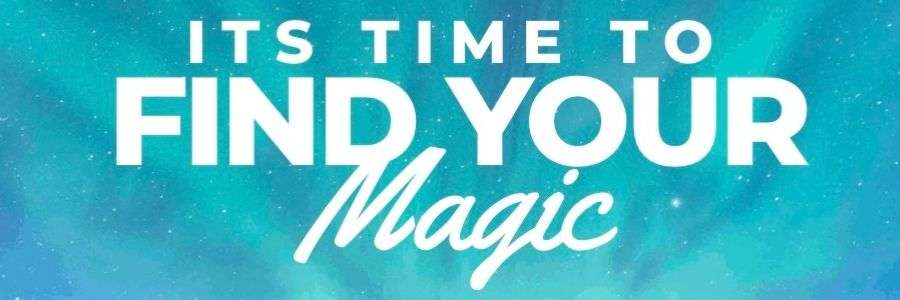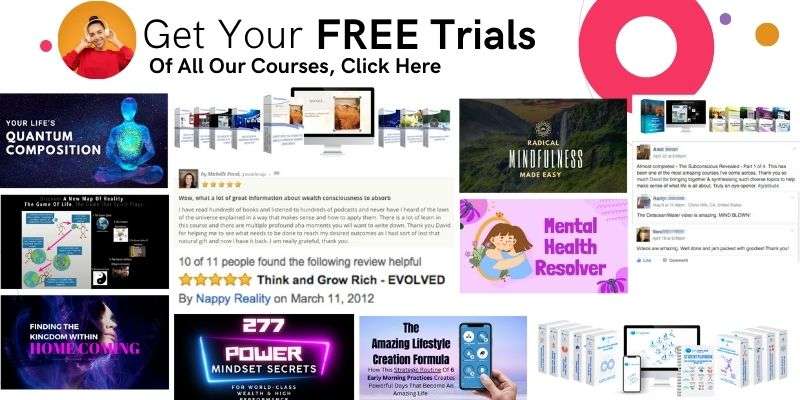Money as a Technology and Tool for Freedom.
When you look at it this way, you realize that money is the TECHNOLOGY & TOOL that enables our inalienable right to freedom.
Not democracy, but money.
Yes, democracy is good and very important, but it is not the same as freedom. Democracy is simply the right to vote for public officials, every 4 years or so. At its ideal, it is the concept of “majority rules”. That is not the same thing as freedom (although it provides more freedom than, say, a dictatorship). So, in a way, money is what gives you actual freedom. Because it gives the holder “go power”.
In a democracy, without money, you are stuck. No freedom.
With money, you have agency, you can do things. Practical, personal freedom. A tool. Democracy is a political framework, money is the tool (at least for now, in our current society).
If the control of your money supply is entirely outside your hands, then you are not free. You need a level of control of your money supply to have true freedom.
“If the American people ever allow private banks to control the issue of their currency, first by inflation, then by deflation, the banks and corporations that will grow up around them will deprive the people of all property until their children wake up homeless on the continent their Fathers conquered… I believe that banking institutions are more dangerous to our liberties than standing armies… The issuing power should be taken from the banks and restored to the people, to whom it properly belongs.”
– Thomas Jefferson, 3rd US President, and Founding Father
S(h)e who owns/controls the monetary system also controls you. Because they can control your focus and attention, your time and energy, your perception, and your creative ability. Because you need money to survive, they can channel your energies and faculties by dictating your money access and flow, forcing you to play by their tune. The Pied Piper. That is one reason why billions of people spend their lives doing jobs they hate, to earn the money they require, and rarely is it enough to leave the proverbial “rat race”.
And that is why the blockchain is so important. It places the power of co-owning the monetary system into your hands, at least to a greater extent.
Redefining Freedom, Democracy, Government, Social Contract, And Law from A Financial Inclusion Context
Freedom = The individual sovereign authority and ability to think, feel and act as you see fit, while respecting the same freedom in others.
According to the United Nation’s Universal Declaration of Human Rights:
- Article 1: All human beings are born free and equal in dignity and rights. They are endowed with reason and conscience and should act towards one another in a spirit of brotherhood.
- Article 2: Everyone is entitled to all the rights and freedoms set forth in this Declaration, without distinction of any kind, such as race, color, sex, language, religion, political or other opinion, national or social origin, property, birth, or other status. Furthermore, no distinction shall be made on the basis of the political, jurisdictional, or international status of the country or territory to which a person belongs, whether it be independent, trust, non-self-governing or under any other limitation of sovereignty.
- Article 3: Everyone has the right to life, liberty, and security of person.
- Article 4: No one shall be held in slavery or servitude; slavery and the slave trade shall be prohibited in all their forms.
- Article 5: No one shall be subjected to torture or to cruel, inhuman or degrading treatment or punishment.
Democracy = A system of government by the whole population or all the eligible members of a state, typically through elected representatives. Control of an organization or group by the majority of its members.
We need both. Freedom and democracy. But we must be aware that democracy is not the same thing as freedom. Yes, it is one of the many ingredients that enable freedom, but in and of itself, it is not freedom. And yes, democracy is a value we ought to defend and support (until we find a better system, which we haven’t yet), even as we seek ways to fix it and improve it. But it is still not the same as freedom, by any definition besides rhetoric.
If you have money, you have a higher level of sovereign authority and the ability to think, feel and act as you see fit. If you don’t have money, you are forced to think within a scarcity box and act along very narrow confines designed for you by other people. You are no longer sovereign, you no longer have agency (ability to act). In effect, you are in bondage.
Slavery = Excessive dependence on or devotion to something. Also: servitude; bondage; subjugation.
When we consider these definitions, we might conclude that modern money doesn’t really promote freedom for most people. Instead, we might conclude that, for most people on earth (not for all), it is a consciousness and energy trap. Because it surreptitiously and covertly controls our focus and attention, our time and energy, our perception, and creative ability. AKA Slavery.
Or as Robert Kiyosaki (Rich Dad, Poor Dad) says, it is like an IV drip that gives you just enough to stay alive, but not enough to leave the hospital.
Most men would feel insulted if it were proposed to employ them in throwing stones over a wall, and then in throwing them back, merely that they might earn their wages. But many are no more worthily employed now.
– Henry David Thoreau
Clearly the most unfortunate people are those who must do the same thing over and over again, every minute, or perhaps twenty to the minute. They deserve the shortest hours and the highest pay.
– John Kenneth Galbraith
Government = The group of people with the authority to govern a country or state. The system by which a state or community is governed. The action or manner of controlling or regulating a state, organization, or people.
Social Contract = An implicit agreement among the members of a society to cooperate for social and public benefits, for example by sacrificing some individual freedom for state protection and provision of public services and security. Theories of a social contract became popular in the 16th, 17th, and 18th centuries among theorists such as Thomas Hobbes, John Locke, and Jean-Jacques Rousseau, as a means of explaining the origin of government and the obligations of the population. Social contract theory says that people live together in society in accordance with an agreement that establishes moral and political rules of behavior, in service of the needs of the public at large.
Republic = A state in which supreme power is held by the people through their elected representatives, and which has an elected or nominated leadership rather than an absolute monarch. Also, the protection of minority rights, an exercise of tolerance and intercultural dialogue, encouraging mutual respect and understanding, whereby the different groups that comprise a society should be able to engage and cooperate with one another while preserving their own identity and liberty.
The Law = The system of rules which a particular country or community recognizes as regulating the actions of its members and which it may enforce by the imposition of penalties. In short, the law is a pre-agreed set of behaviors (if this happens, then that happens).
Now, here is how those last four definitions connect to each other, ideally, in summary:
- The public is bound to the government, and vice versa, through the social contract and, by extension, the law.
- The social contract is defined and regulated by law. The law ideally reflects the wishes of the masses, while respecting the values of a republic (individual rights).
- The government’s job is to fulfill the social contract in service to the public and the individual, as per the law.
- The law’s job is to tie the public to the government and vice versa, and to each other, in a predictable way (hence, creating a civilization), as per the social contract of the republic.
- The public’s obligation is to follow the law and finance the government.
In an ideal world, this is meant to work well. It is meant to be functional, adaptable, and sustainable.
But we do not live in an ideal world.
When anyone or more of these pieces fail, we have a revolution. Because needs and expectations are unmet, to one extent or the other. And I believe this is what has brought about the current and ongoing monetary revolution, powered by the blockchain, and started by one Satoshi Nakamoto. Because necessity is the mother of invention.
Enter Satoshi Nakamoto
“The Times 03/Jan/2009 Chancellor on brink of second bailout for banks.”
For Satoshi to have placed that statement as block 0 of the world’s first blockchain, the Bitcoin blockchain, indicates to me that he was frustrated with the way things were going within the financial system. But I cannot know for sure because no one knows who Satoshi is, let alone contact Satoshi.
No one knows whether Satoshi is a woman, man, group of people, or institution.
Amid the GFC (Global Financial Crisis) of 2007 – 2009, one Satoshi Nakamoto appeared out of nowhere, introduced the concept of the blockchain and, by extension, Bitcoin. Satoshi helped build it, refused to discuss who her/his/their identity was, and then disappeared. True story.
A mysterious leader. A reluctant hero. An anti-hero even maybe.
Satoshi seems to simply have had enough of this s**t and did something about it. Then vanished.
Was Satoshi afraid for his/her/their life? That’s reasonable, considering the powerful forces against this kind of change. Whatever the reason for Satoshi’s anonymity, we don’t know.
Anyway, through the course of this book, we will see more and more about Satoshi’s mindset and probable goals.
What is most important to us is that Satoshi introduced the blockchain to the world.
Enter The Blockchain
Blockchain = Blockchain is a system of recording information in a way that makes it difficult or impossible to change, hack, or cheat the system. A blockchain is essentially a digital ledger of transactions that is duplicated and distributed across the entire network of computer systems on the blockchain. Blockchain is a mechanism for recording information that is unalterable and does not depend on trusting a third party.
For finance, how does the blockchain compare with the current system?
A network of heavily regulated intermediaries facilitates transactions between parties by reconciling transaction data and assuming some of the inherent risk to make the current financial system possible. This network was developed piecemeal, in response to different needs at different times and utilizing different technologies. Within this network, financial institutions maintain proprietary ledgers of transactions with minimal transparency into each version. Therefore, these institutions, and all market participants must invest in costly software to reconcile transaction data, which remains vulnerable to error and fraud. They must also submit to periodic audits to ensure their proprietary ledgers have been recorded accurately.
If all relevant parties could see the same ledger of transactions at the same time, then it could eliminate the expensive inconveniences and much of the accompanying risk; everyone could easily work from one accessible source of truth. Enter blockchain.
Blockchain technology is computer software that provides an immutable, transparent, fraud-proof ledger that shares transactions between participants in real-time via the Internet. With an Internet connection, a smart device, and access to a blockchain ecosystem, financial opportunities can be at the fingertips of those in previously unreachable markets. Blockchain can function within, without, or alongside current financial systems, opening economic possibilities for newcomers and incumbents alike.
– Rachel W. Robinson, Blockchain Serving the Unbanked, Blockchain Research Institute
People and institutions who do not know or trust each other, reside in different countries, are subject to different jurisdictions, and who have no legally binding agreements with each other can now interact over the Internet without the need for trusted third parties like banks, Internet platforms, or other types of clearing institutions.
Chain of Blocks: In a blockchain network, token transactions are recorded in batches of data called “blocks” that are “hashed.” This cryptographic hash creates a digital fingerprint of the block. Each block includes the hash of the prior block, thereby linking one block with another into a chain of blocks. This process guarantees the historic integrity of all the blocks back to the first block, also referred to as the genesis block. If data in one block is altered, the hash value of the block and all subsequent blocks will change, and every node in the network will know that the data has been tampered with. This growing list of chained blocks is also referred to as the ledger. The ledger is a file that maintains a growing list of transaction records, chained in blocks that are cryptographically secured from tampering and revision. If manipulation attempts were made, the hash value of the manipulated ledger would not coincide with the hash value recorded on the copies of the ledger on all other nodes. The hash value of a block therefore serves as a counterfeit protection that can be used to check the authenticity of a transaction on a ledger.
Distributed Ledger: A copy of the ledger is stored on multiple nodes of a cryptographically secured P2P network. In order to change the ledger data on all copies of the ledger throughout the whole network, the network nodes need to reach a mutual agreement about such a change. A distributed ledger is a shared, trusted, public ledger of transactions that everyone can inspect, but which no single user controls. Each independent node has the latest version of the ledger, which contains all transactions that have ever been made, and can verify transactions. This process is referred to as “consensus.” This is particularly useful in inter-organizational setups where no institution wants to trust another institution with the management of their data.
– Shermin Voshmgir, “Token Economy”
As you can see, the blockchain solves the “trust problem”.
In the old financial system, one of the roles that government and banks played was to ensure and enforce a level of trust.
With the blockchain, we now have an even higher level of trust, without the need for banks or governments to secure that trust. We now have a mechanism for cheaper, faster, better, more efficient, more secure trust.
“The root problem with conventional currency is all the trust that’s required to make it work. The central bank must be trusted not to debase the currency, but the history of fiat currencies is full of breaches of that trust.”
– Satoshi Nakamoto
“Banks must be trusted to hold our money and transfer it electronically, but they lend it out in waves of credit bubbles with barely a fraction in reserve. We have to trust them with our privacy, trust them not to let identity thieves drain our accounts. Their massive overhead costs make micropayments impossible.”
– Satoshi Nakamoto
Another problem the blockchain solves is the “Double-Spend Problem”.
Think about it. We can make endless copies of digital stuff. Piracy of film, music, games, and other files is rampant.
That is NOT something that should happen with money. If we can make endless copies of the dollars in my account, it would wreak havoc to the system.
In the past, banks have ensured this doesn’t happen. And governments have punished forgers when it did happen.
Blockchain solves this problem, making it impossible or prohibitively expensive to make copies. No need for banks and governments for this function. Blockchain does a much better job at eliminating double-spend, cheaper and faster.
“When there are multiple double-spent versions of the same transaction, one and only one will become valid.”
– Satoshi Nakamoto
If you liked this excerpt, get the full book here:










